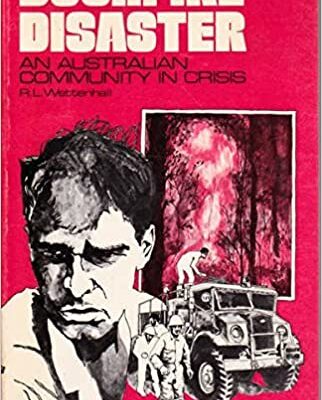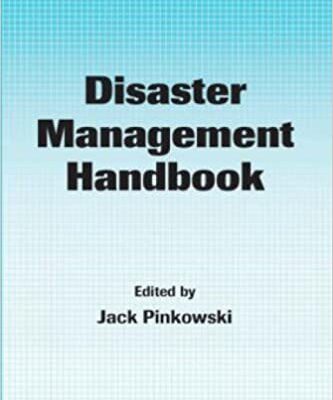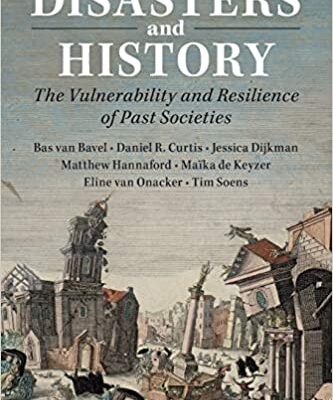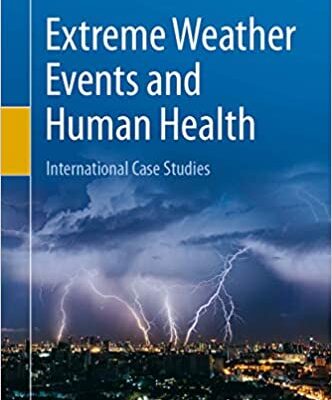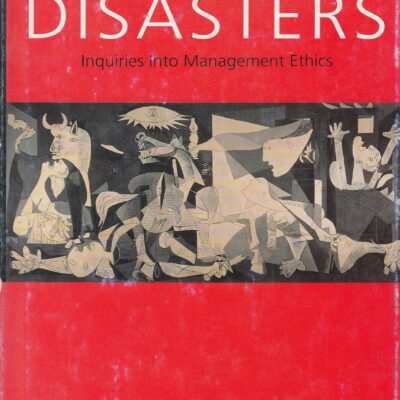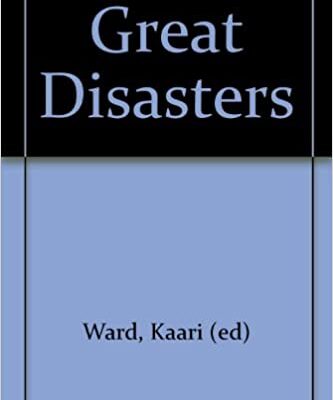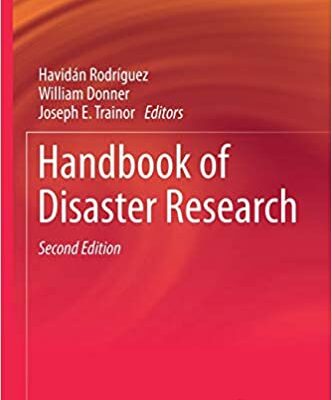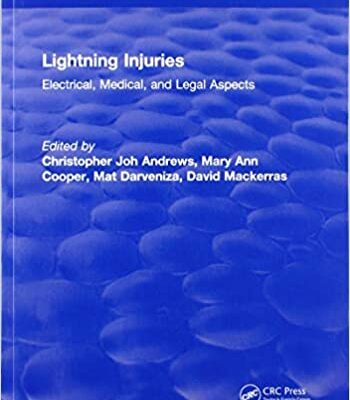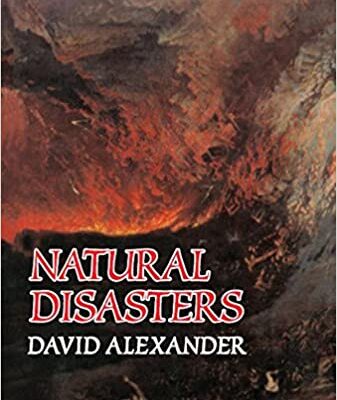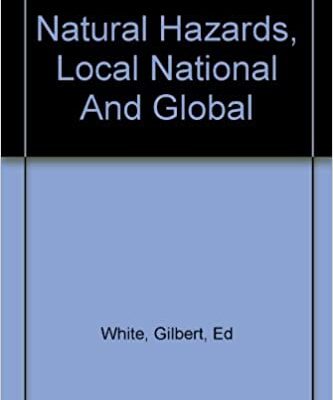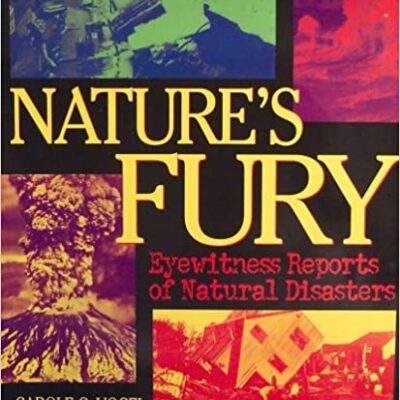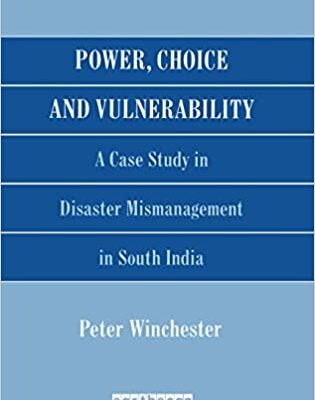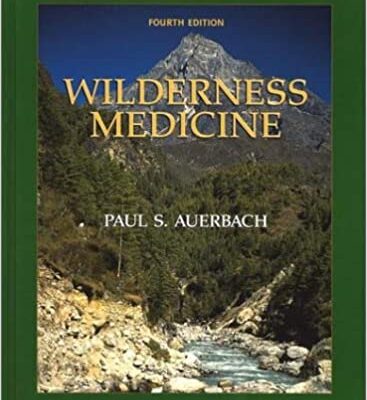Assessment of Research on Natural Hazards
Bushfire disaster: An Australian community in crisis
(Studies in Australian society) Paperback – January 1, 1975
by Roger Lewellyn Wettenhall (Author)
(Studies in Australian society) Paperback – January 1, 1975
by Roger Lewellyn Wettenhall (Author)
By Jack Pinkowski - Disaster Management Handbook
2nd (second) Edition Hardcover – February 6, 2008
2nd (second) Edition Hardcover – February 6, 2008
Clinical Treatment Guidelines for Wildland Fire Medical Units
Paperback – October 11, 2013
by National Wildfire Coordinating Group (Author)
In 2010, the Incident Emergency Medical Subcommittee (IEMS), operating under the authority of the National Wildfire Coordinating Group (NWCG) - Risk Management Committee, completed the document, Interim Minimum Standards for Medical Units Managed By NWCG Member Agencies. The document was the first of several to be developed that will address the need for uniform standards and safe delivery of medical care provided by Emergency Medical Services (EMS) personnel at wildland fire. It focused on recognizing current practices and recommending standards to medical units for; promoting the use of licensed personnel within their scope of practice, state EMS office notification, applicable rules and jurisdictions, medical direction, communications, patient transportation and medical equipment, medication and supplies used. The IEMS also committed to developing wildland fire specific protocols and this document, Clinical Treatment Guidelines for Wildland Fire Medical Units, PMS 551, is the finished product. A task group of physicians with diverse backgrounds in wildland fire medicine, wilderness medicine and emergency/ clinical backgrounds reviewed this document and provided valuable input. These guidelines where developed with the expectation that the typical appropriate Basic Life Support (BLS) or Advanced Life Support (ALS) EMS interventions will be provided as needed so we did not include detailed protocols for EMS medical or trauma patient care, which already exists. Rather, we focused on guidance for the unique differences and challenges associated with remote sites and expanded evaluation skills needed for patient care issues such as: 1) assisting a patient with first aid and self-care health management; 2) triaging conditions for recognition of appropriate self-care assistance vs. need for transport to clinical medical care; and 3) initiating urgent/EMS care using appropriate and predetermined transport modes.
Paperback – October 11, 2013
by National Wildfire Coordinating Group (Author)
In 2010, the Incident Emergency Medical Subcommittee (IEMS), operating under the authority of the National Wildfire Coordinating Group (NWCG) - Risk Management Committee, completed the document, Interim Minimum Standards for Medical Units Managed By NWCG Member Agencies. The document was the first of several to be developed that will address the need for uniform standards and safe delivery of medical care provided by Emergency Medical Services (EMS) personnel at wildland fire. It focused on recognizing current practices and recommending standards to medical units for; promoting the use of licensed personnel within their scope of practice, state EMS office notification, applicable rules and jurisdictions, medical direction, communications, patient transportation and medical equipment, medication and supplies used. The IEMS also committed to developing wildland fire specific protocols and this document, Clinical Treatment Guidelines for Wildland Fire Medical Units, PMS 551, is the finished product. A task group of physicians with diverse backgrounds in wildland fire medicine, wilderness medicine and emergency/ clinical backgrounds reviewed this document and provided valuable input. These guidelines where developed with the expectation that the typical appropriate Basic Life Support (BLS) or Advanced Life Support (ALS) EMS interventions will be provided as needed so we did not include detailed protocols for EMS medical or trauma patient care, which already exists. Rather, we focused on guidance for the unique differences and challenges associated with remote sites and expanded evaluation skills needed for patient care issues such as: 1) assisting a patient with first aid and self-care health management; 2) triaging conditions for recognition of appropriate self-care assistance vs. need for transport to clinical medical care; and 3) initiating urgent/EMS care using appropriate and predetermined transport modes.
Disaster and Sociolegal Studies
Hardcover – September 19, 2013
by Susan Sterett (Editor)
Legal governance of disaster brings both care and punishment to the upending of daily life of place-based disasters. National states use disasters to reorganize how they govern. This collection considers how law is implicated in disaster. The late modern expectation that states are to care for their population makes it particularly important to point out the limits to care - limits that appear less in the grand rhetoric than in the government reports, case-level decisionmaking, administrative rules, and criminalization that make up governing. The authors argue that government documents explaining disaster put the responsibility to adapt to rapidly changing circumstances on people - often on individuals - not on the government. Law is a causal force in what are commonly called natural disasters. When courts consider causation and property rights, often separated across cases and over time, they often defer to the importance of economic activity. Police forces charged with protection rapidly turn on those they are to protect, thinking that people need protection from the victims of disaster. These insightful essays feature leading scholars whose perspectives range across disasters around the world. Their findings point to reconsidering what states do in disaster, and how law enables and constrains action.
Hardcover – September 19, 2013
by Susan Sterett (Editor)
Legal governance of disaster brings both care and punishment to the upending of daily life of place-based disasters. National states use disasters to reorganize how they govern. This collection considers how law is implicated in disaster. The late modern expectation that states are to care for their population makes it particularly important to point out the limits to care - limits that appear less in the grand rhetoric than in the government reports, case-level decisionmaking, administrative rules, and criminalization that make up governing. The authors argue that government documents explaining disaster put the responsibility to adapt to rapidly changing circumstances on people - often on individuals - not on the government. Law is a causal force in what are commonly called natural disasters. When courts consider causation and property rights, often separated across cases and over time, they often defer to the importance of economic activity. Police forces charged with protection rapidly turn on those they are to protect, thinking that people need protection from the victims of disaster. These insightful essays feature leading scholars whose perspectives range across disasters around the world. Their findings point to reconsidering what states do in disaster, and how law enables and constrains action.
Disaster: A Psychological Essay (Death and Dying Series)
Disasters and History
by Bas van Bavel (Author)
Disasters and History offers the first comprehensive historical overview of hazards and disasters. Drawing on a range of case studies, including the Black Death, the Lisbon earthquake of 1755 and the Fukushima disaster, the authors examine how societies dealt with shocks and hazards and their potentially disastrous outcomes. They reveal the ways in which the consequences and outcomes of these disasters varied widely not only between societies but also within the same societies according to social groups, ethnicity and gender. They also demonstrate how studying past disasters, including earthquakes, droughts, floods and epidemics, can provide a lens through which to understand the social, economic and political functioning of past societies and reveal features of a society which may otherwise remain hidden from view. This title is also available as Open Access on Cambridge Core.by Bas van Bavel (Author)
Disasters and History offers the first comprehensive historical overview of hazards and disasters. Drawing on a range of case studies, including the Black Death, the Lisbon earthquake of 1755 and the Fukushima disaster, the authors examine how societies dealt with shocks and hazards and their potentially disastrous outcomes. They reveal the ways in which the consequences and outcomes of these disasters varied widely not only between societies but also within the same societies according to social groups, ethnicity and gender. They also demonstrate how studying past disasters, including earthquakes, droughts, floods and epidemics, can provide a lens through which to understand the social, economic and political functioning of past societies and reveal features of a society which may otherwise remain hidden from view. This title is also available as Open Access on Cambridge Core.Extreme Weather Events and Human Health: International Case Studies
1st ed. 2020 Edition
1st ed. 2020 Edition
Global Disasters: Inquiries into Management Ethics
First Edition
by Robert E. Allinson (Author)
This book, by a professor of philosophy at the Chinese University of Hong Kong and former professor of business ethics at Oxford, says that major disasters can be prevented. He shows how corporate management must accept its moral responsibility to create a corporate ethos that recognizes the basic principle that people matter most.
First Edition
by Robert E. Allinson (Author)
This book, by a professor of philosophy at the Chinese University of Hong Kong and former professor of business ethics at Oxford, says that major disasters can be prevented. He shows how corporate management must accept its moral responsibility to create a corporate ethos that recognizes the basic principle that people matter most.
Great Disasters
Hardcover – January 1, 1993
Hardcover – January 1, 1993
Handbook of Disaster Research (Handbooks of Sociology and Social Research)
2nd ed. 2018 Edition
by Havidán Rodríguez (Editor), William Donner (Editor), Joseph E. Trainor (Editor)
This timely Handbook is based on the principle that disasters are social constructions and focuses on social science disaster research. It provides an interdisciplinary approach to disasters with theoretical, methodological, and practical applications. Attention is given to conceptual issues dealing with the concept "disaster" and to methodological issues relating to research on disasters. These include Geographic Information Systems as a useful research tool and its implications for future research. This seminal work is the first interdisciplinary collection of disaster research as it stands now while outlining how the field will continue to grow.
2nd ed. 2018 Edition
by Havidán Rodríguez (Editor), William Donner (Editor), Joseph E. Trainor (Editor)
This timely Handbook is based on the principle that disasters are social constructions and focuses on social science disaster research. It provides an interdisciplinary approach to disasters with theoretical, methodological, and practical applications. Attention is given to conceptual issues dealing with the concept "disaster" and to methodological issues relating to research on disasters. These include Geographic Information Systems as a useful research tool and its implications for future research. This seminal work is the first interdisciplinary collection of disaster research as it stands now while outlining how the field will continue to grow.
Lightning Injuries: Electrical, Medical, and Legal Aspects
1st Edition
by Christopher Joh Andrews (Author)
Lightning Injuries: Electrical, Medical, and Legal Aspects presents a thorough examination of injuries inflicted by lightning strikes. The expertise of acknowledged world authorities from three continents have been brought together to create this truly remarkable volume. Lightning Injuries: Electrical, Medical, and Legal Aspects begins with a short historical review featuring a discussion of the physics of lightning phenomena and the aspects of electrical circuit theory. This review provides the background for following chapters, which address topics such as the epidemiology of lightning injury, the pathogenesis of the features of lightning injury, the clinical aspects of managing patients with lightning injury, and lightning injury mediated by communications systems (including telephones). The book also describes the problem of finding protection against lightning strikes and the issues that arise in legal liability as a result of lightning strikes. The book is written for a diverse audience and includes material that makes it appropriate for all professionals in medical, legal, and technical fields. Never before has such a comprehensive collation of related facets of lightning injury been published within a single volume.1st Edition
by Christopher Joh Andrews (Author)
Lightning Injuries: Electrical, Medical, and Legal Aspects presents a thorough examination of injuries inflicted by lightning strikes. The expertise of acknowledged world authorities from three continents have been brought together to create this truly remarkable volume. Lightning Injuries: Electrical, Medical, and Legal Aspects begins with a short historical review featuring a discussion of the physics of lightning phenomena and the aspects of electrical circuit theory. This review provides the background for following chapters, which address topics such as the epidemiology of lightning injury, the pathogenesis of the features of lightning injury, the clinical aspects of managing patients with lightning injury, and lightning injury mediated by communications systems (including telephones). The book also describes the problem of finding protection against lightning strikes and the issues that arise in legal liability as a result of lightning strikes. The book is written for a diverse audience and includes material that makes it appropriate for all professionals in medical, legal, and technical fields. Never before has such a comprehensive collation of related facets of lightning injury been published within a single volume.Natural Disasters
1st Edition
by David C. Alexander (Author)
As a well balanced and fully illustrated introductory text, this book provides a comprehensive overview of the physical, technological and social components of natural disaster. The main disaster-producing agents are reviewed systematically in terms of geophysical processes and effects, monitoring, mitigation and warning. The relationship between disasters and society is examined with respect to a wide variety of themes, including damage assessment and prevention, hazard mapping, emergency preparedness, the provision of shelter and the nature of reconstruction. Medical emergencies and the epidemiology of disasters are described, and refugee management and aid to the Third World are discussed. A chapter is devoted to the sociology, psychology, economics and history of disasters.; In many parts of the world the toll of death, injury, damage and deprivation caused by natural disasters is becoming increasingly serious. Major earthquakes, volcanic eruptions, droughts, floods and other similar catastrophes are often followed by large relief operations characterized by substantial involvement of the international community. The years 1990-2000 have therefore been designated by the United Nations as the International Decade for Natural Disaster Reduction.; The book goes beyond mere description and elevates the field of natural catastrophes to a serious academic level. The author's insights and perspectives are also informed by his practical experience of being a disaster victim and survivor, and hence the unique perspective of a participant observer. Only by surmounting the boundaries between disciplines can natural catastrophe be understood and mitigation efforts made effective. Thus, this book is perhaps the first completely interdisciplinary, fully comprehensive survey of natural hazards and disasters. It has a clear theoretical basis and it recognizes the importance of six fundamental approaches to the field, which it blends carefully in the text in order to avoid the p
1st Edition
by David C. Alexander (Author)
As a well balanced and fully illustrated introductory text, this book provides a comprehensive overview of the physical, technological and social components of natural disaster. The main disaster-producing agents are reviewed systematically in terms of geophysical processes and effects, monitoring, mitigation and warning. The relationship between disasters and society is examined with respect to a wide variety of themes, including damage assessment and prevention, hazard mapping, emergency preparedness, the provision of shelter and the nature of reconstruction. Medical emergencies and the epidemiology of disasters are described, and refugee management and aid to the Third World are discussed. A chapter is devoted to the sociology, psychology, economics and history of disasters.; In many parts of the world the toll of death, injury, damage and deprivation caused by natural disasters is becoming increasingly serious. Major earthquakes, volcanic eruptions, droughts, floods and other similar catastrophes are often followed by large relief operations characterized by substantial involvement of the international community. The years 1990-2000 have therefore been designated by the United Nations as the International Decade for Natural Disaster Reduction.; The book goes beyond mere description and elevates the field of natural catastrophes to a serious academic level. The author's insights and perspectives are also informed by his practical experience of being a disaster victim and survivor, and hence the unique perspective of a participant observer. Only by surmounting the boundaries between disciplines can natural catastrophe be understood and mitigation efforts made effective. Thus, this book is perhaps the first completely interdisciplinary, fully comprehensive survey of natural hazards and disasters. It has a clear theoretical basis and it recognizes the importance of six fundamental approaches to the field, which it blends carefully in the text in order to avoid the p
Natural Hazards
Hardcover – January 1, 1974
by G.F. (Ed.) White (Author)
Hardcover – January 1, 1974
by G.F. (Ed.) White (Author)
Nature's Fury: Eyewitness Reports of Natural Disasters
Carole G. Vogel (2000-05-03)
Paperback – January 1, 1825
Carole G. Vogel (2000-05-03)
Paperback – January 1, 1825
Power, Choice and Vulnerability: A Case Study in Disaster Mismanagement in South India
1st Edition
by Peter Winchester (Author)
Natural disasters make dramatic reading. Every year, some area of the world is devastated by a disaster, with enormous consequent loss of life and disruption to livelihoods. What can be done to alleviate this? Why are such disasters so lethal? Why do people expose themselves to such hazards? Do mitigation programmes help? What effect does aid really have on the areas that receive it? By examining one particular cyclone-prone area of Southern India in great detail over a 10-year period Peter Winchester has come up with some perceptive answers to the questions. In particular, he formulates a set of five 'golden rules' for disaster management. The book will provide valuable and thought-provoking reading for anyone involved with disaster management, and will be essential for all those whose work involves aid or development in disaster-prone areas.
1st Edition
by Peter Winchester (Author)
Natural disasters make dramatic reading. Every year, some area of the world is devastated by a disaster, with enormous consequent loss of life and disruption to livelihoods. What can be done to alleviate this? Why are such disasters so lethal? Why do people expose themselves to such hazards? Do mitigation programmes help? What effect does aid really have on the areas that receive it? By examining one particular cyclone-prone area of Southern India in great detail over a 10-year period Peter Winchester has come up with some perceptive answers to the questions. In particular, he formulates a set of five 'golden rules' for disaster management. The book will provide valuable and thought-provoking reading for anyone involved with disaster management, and will be essential for all those whose work involves aid or development in disaster-prone areas.
Wilderness Medicine (Wilderness Medicine: Management of Wilderness and Environmental Emergencies)
4th Edition
by Paul S. Auerbach MD MS (Author)
Thoroughly revised, updated and expanded, this critically acclaimed reference prepares you to manage medical emergencies caused by environmental encounters, including injury prevention and respect for natural environments. Included in the text are color illustrations that give the reader a better view of the situation at hand. Packed with how-to explanations and practical, direct advice, it covers emergencies such as envenomations, altitude illness, burns, motion sickness, and problems caused by cold, heat, snakes, sharks, and marine microbes. Includes totally new information on bear attacks, cave rescue, airway and eye emergencies, wilderness clothing, and much more!
4th Edition
by Paul S. Auerbach MD MS (Author)
Thoroughly revised, updated and expanded, this critically acclaimed reference prepares you to manage medical emergencies caused by environmental encounters, including injury prevention and respect for natural environments. Included in the text are color illustrations that give the reader a better view of the situation at hand. Packed with how-to explanations and practical, direct advice, it covers emergencies such as envenomations, altitude illness, burns, motion sickness, and problems caused by cold, heat, snakes, sharks, and marine microbes. Includes totally new information on bear attacks, cave rescue, airway and eye emergencies, wilderness clothing, and much more!



